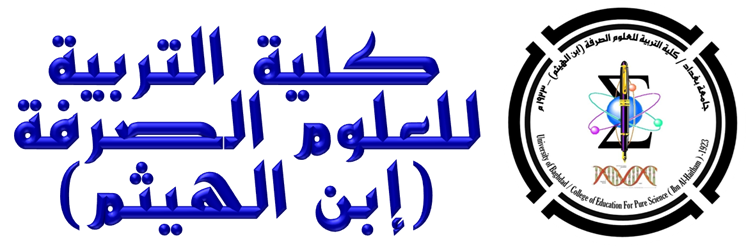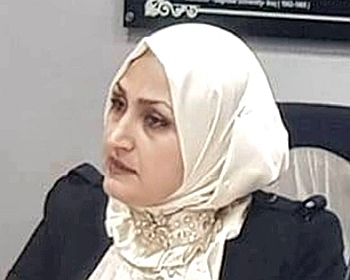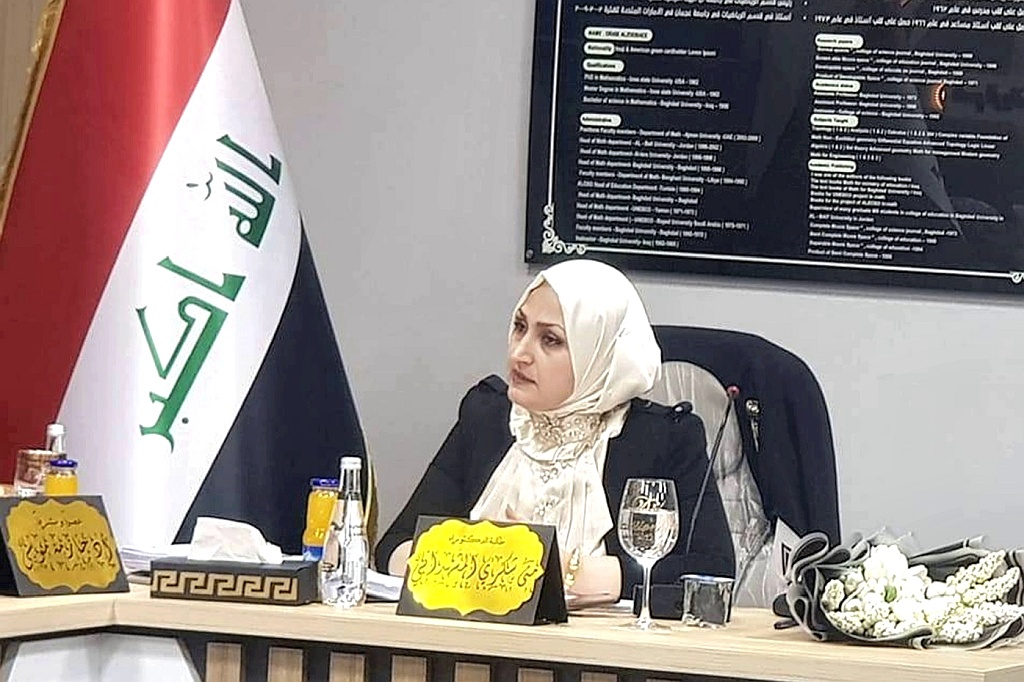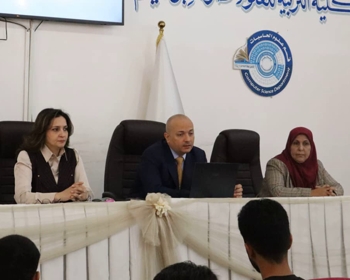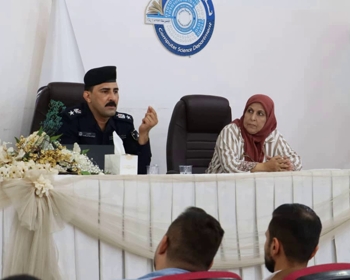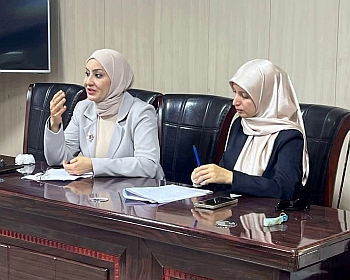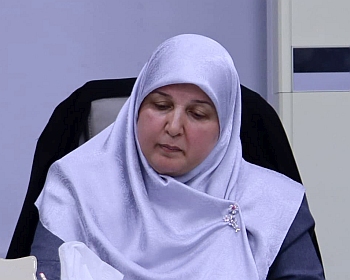ناقش قسم علوم الحياة في كلية التربية للعلوم الصرفة (ابن الهيثم) أطروحة الدكتوراه الموسومة ” الدور المحتمل لبعض المؤشرات الوراثية المناعية كمعلمات حيوية في الأناث العراقيات المصابات بسرطان الثدي ” للطالبة ” منى شكري محمود ” التي انجزتها باشراف مشترك لتديسيتي القسم ” أ.د. حازمة موسى العباسي ” و ” أ.م.د. وفاء صبري ماهود” .
هدفت هذه الدراسة إلى تقييم دور بعض المتغيرات المناعية مثل (IL-1β, IFN-γ, MMP-9) وكذلك التعبير الجيني لكلا من HLA-G، miR-148a بالاضافة الى مثيلة HLA-G وتقييم تأثير هذه المتغيرات كمؤشر حيوي للاصابة بسرطان الثدي لدى النساء.
تضمين الدراسة 75 عينة دم محيطي، والتي شملت 50 مريضا تم جمع العينات من مستشفى الأورام التعليمي في مدينة الطب ببغداد ومستشفى العلوية. تراوحت الأعمار للمرضى ما بين (30-65) سنة ، بمتوسط عمر 48 سنة تم تشخيصهم حديثاً بسرطان الثدي ، و25 عينة من الاصحاء تراوحت اعمارهم بين (30-67) سنة ومتوسط عمر 49 سنة.
تم جمع بعض المعلومات من المرضى مباشرة ، وتم الحصول على الخصائص السريرية والنسيجية من السجلات الطبية بعد الحصول على الموافقة الأخلاقية ، ولم يتلق أي من المرضى العلاج الكيميائي أو العلاج الإشعاعي أو استئصال الثدي قبل جمع الدم. استغرقت فترة جمع العينات ستة أشهر ، ابتداءً من مارس حتى سبتمبر 2021.
أظهرت نتائج الدراسة المناعية المتمثلة بتقنية ELISA زيادة في مستوى الوسائط الخلوية (IL-1β, IFN-γ, MMP-9) في مجموعة المرضى حيث بلغت (12148.089±1581.257, 211.615±17.217, 302.492±33.35)pg/ml على التوالي مقارنة بمجموعة السيطرة (1215.618±57.068, 76.618±5.242, 49.645±2.295)pg/ml .(p≤0.001)
تشير النتائج إلى زيادة التعبير الجيني لجين HLA-G لدى المرضى اذ بلغ (4.2332 ± 0.515) لدى المرضى مقارنة بمجموعة التحكم (p≤0.001) (1.1234±0.084) ، حيث يعتبر من العوامل المثبطة للمناعة اذ يساهم في تطور الورم. كما بينت النتائج زيادة في تعبير miR-148a لدى المرضى اذ بلغ (2.121 ± 0.126) مقارنةً بمجموعة السيطرة(1.101±0.091) (p≤0.001) ، كما تبين ارتفاع مستوى مثيلة HLA-G اذ بلغت (43.08 ± 4.94) لدى المرضى مقارنة بمجموعة السيطرة (21.53±5.71) (p≤0.01) .
وفقًا للنتائج الحالية ، يمكن استخدام المعلمات المناعية كمؤشرات بيولوجية تنبؤية للكشف عن سرطان الثدي، كما يمكن اعتبار HLA-G هدفًا علاجيًا جيدًا لتوقف تقدم المرض.
The possible Role of some Immunogenetics Parameters as Biomarkers in Iraqi Female with Breast Cancer
By Muna Shukri Mahmood AL-Mashhadani
Supervised by Asst.prof.Dr. Dr.HazimaMossaAlabassiDr.Wafaa Sabri Mahood
Aims of Study
This study aimed to evaluate the role of some immunological parameters such as (IL-1β, IFN-γ, MMP-9), HLA-G, miR-148a gene expression, and methylation of HLA-G and assess the effecting of these parameters as a biomarker in pathogenicity of female breast cancer patients.
Abstract
Breast cancer (BC) is a type of cancer that affects the breast tissue and results from abnormal cell proliferation. It is the second most common type of cancer globally, after lung cancer. That is considered the most common cause of death among women, especially in Western countries.
This study aimed to evaluate the role of some immunological parameters such as (IL-1β, IFN-γ, MMP-9), HLA-G, miR-148a gene expression, and methylation of HLA-G and assess the effect of these parameters as a biomarker in pathogen city of female breast cancer patients.
A total of 75 peripheral blood samples were involved in this study, which included 50 patients collected from Tumor Teaching Hospital in Baghdad Medical City and Al-Alelwya Hospital. The ages ranged of patients between (30-65) years, with an average age of 48 years, who were newly diagnosed with breast cancer, and 25 healthy samples which collected from apparent ages ranging (30-67) years and an average age of 49 years.
Some information was collected from patients directly, clinical and histological characteristics were obtained from medical records after obtaining ethical approval, and none of the patients received chemotherapy, radiotherapy, or mastectomy before blood collection.
The sample collection period lasted for six months, starting March until September 2021, and the approval of the Ministry of Health was obtained before the start of the study.
The results of the immunological study represented by the ELISA technique showed an increase in the level of cellular mediators (IL-1β, IFN-γ) as well as (MMP-9) in the patients’ group reached (12148.089±1581.257, 211.615±17.217 and 302.492±33.35)pg/ml respectively compared to healthy group control (1215.618±57.068, 76.618±5.242 and 49.645±2.295)pg/ml (p≤0.001).
The results refer to an increase of HLA-G gene expression (4.2332±0.515)fold in patients compared to the control group (1.1234±0.084)fold (p≤0.001), HLA-G considered an immunosuppressive molecule that aids to Increased aggressiveness of the tumor. Also, the miR-148a fold gene expression was increased (2.121±0.126) fold compared to its fold of gene expression in the control group (1.101±0.091)fold (p≤0.001). A high level of HLA-G methylation was found (43.08±4.94) compared to the control group (21.53±5.71) (p≤0.01).
According to the present result, it may suggest that the immunological parameters may consider a good prognostic biomarker, while the HLA-G may consider a good therapeutic target to stop the disease progression.
Recommendations
It is preferable to isolate lymphocytes to know the source of miR-148a.
Similar studies on tissue samples are needed.
Since there was a high increase of HLA-G gene expression in progress stage and grade, this molecule may be considered a good therapeutic target by using monoclonal antibodies.
Conducting a polymorphism of HLA-G molecule for breast cancer patients.
Conducting a study on women with breast cancer who take oral contraceptives to see its effect on HLA-G gene expression.
